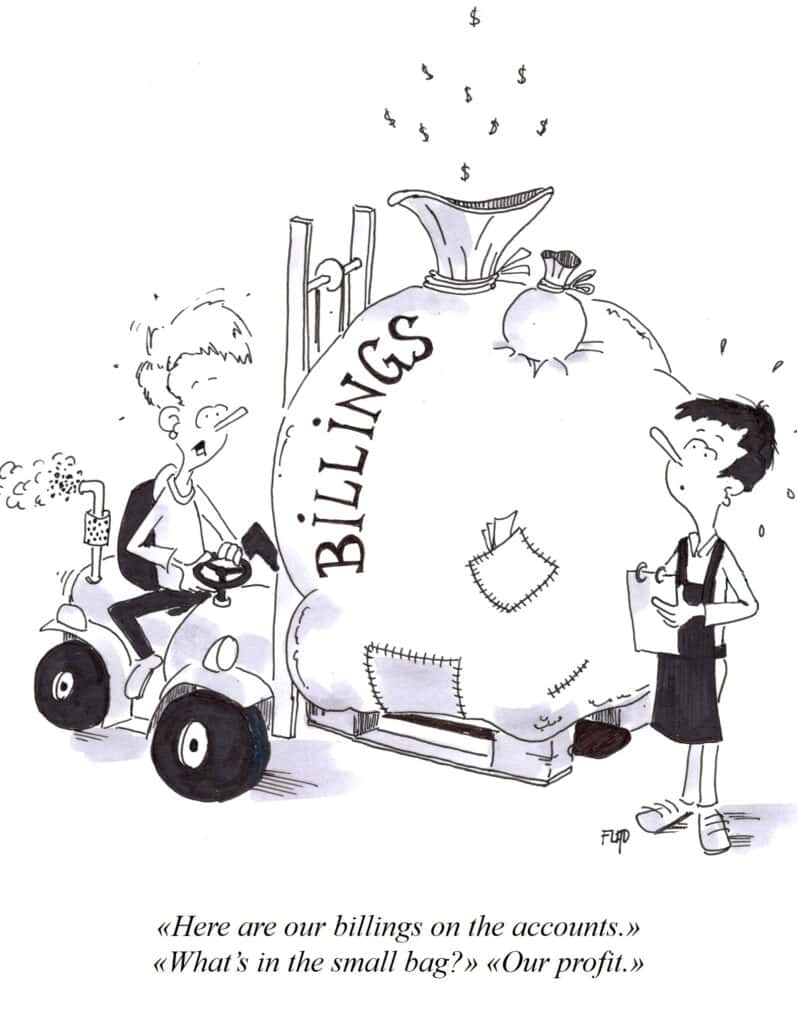Everyone loves a winner. No wonder agencies love to be the top of any New Business Table, even if it is possibly costing them money to be there. Winning a client in a competitive pitch (or to a lesser extent retaining an existing client) is still big news when it comes to the headlines in the trade media. To the winner the spoils. To the loser, public ignominy.
It also explains the popularity of the various pitch tables that populate the trade media, providing a league table on the agency brands that have won more new business than their competitors.
But does this really show us the winners? Or is it possible that the winners identified by this approach are really the losers in the business of advertising?
How could this happen? There are several fundamental questions about these new business tables that need to be considered.

Copyright Dennis Flad. Reprinted with permission.
The first is data collection. In virtually all new business tables, the data is collected from the agencies. The individual agencies report on their new business wins, including the value of that win. While this is sometimes validated independently with the advertiser, in many of the new business leagues it is the agencies getting to mark their own scorecards.
The weakness of this approach, as you will notice, is that the value of the new business win is often much higher than the value of the loss when the agency loses the business, and less than the value assigned to the new agency who won the businesses. It is an anomaly that could be explained by the issue that follows.
Because next is how the data is presented. Most of the league tables report in billings. Not even revenue. A remnant of the media commission system, this was a valid approach when media and creative were all-in-one and commissions and service fees were often standardized – so you could approximate revenue based on the total spend, or agency billings.
But now media and creative is rarely in one agency and the media commission system is long gone. Yet the approximation of billings approach means many agencies will take a revenue figure and then multiply it to reverse-engineer a billings number.
It also assumes not losing is the same as winning. The majority of these new business ladders will credit the agency with a win if the incumbent retains the client. They will also allow the agency to add the client billings to the total won, when in fact it is likely to be revenue-neutral at best.
And I say ‘at best’ because it is more likely than not that the agency has been forced to take a procurement-enabled revenue cut as part of the pitch process, meaning that revenue is likely to have fallen, resulting in a net reduction in agency fee. And yet the new business table will show the win as an equivalent increase in billings, rather than a zero-sum game.
You would hope that winning new business would mean an agency is more profitable. But a few of these big billing wins could be effectively wiping out any associated profit. This is because the bigger the win, the bigger the opportunity for a client procurement team to negotiate economies of scale with the winning agency. Tightening overhead and profit margins and squeezing agency resources on retainer means the agency ends up doing more for effectively less.
If you are interested, when you next read one of these new business tables, check out the methodology on the data collection and the way the wins are presented. Do the figures reflect the agencies’ actual revenue? Or are they likely to be an inflated version of the clients’ spend?
There is no solution to this problem because agencies will never release their new business revenue or profitability figures, even if they know them. So if you are looking for the winners in these new business league tables, I recommend a healthy dose of skepticism, and a more pragmatic view of the way agencies make profit. The big-news business wins that make the trade media headlines are most likely the ones with proportionally less profit. The real winners will be those agencies winning more medium to smaller clients (where procurement is less dominant) or growing their business through consistent and sustained organic revenue growth from their existing clients.
See Also: TrinityP3’s Darren Woolley joins Mediaweek as Marketing / Agency Editor-at-Large
–
Darren Wooley is Global CEO of TrinityP3, Australia’s largest and most influential independent marketing / pitch consultancy, and is well known to the advertising industry. Founded more than 20 years years ago TrinityP3 has a significant presence in Australia where it leads the pitch process for many of the country’s leading advertising accounts as well as having offices in London, New York and Zurich.

